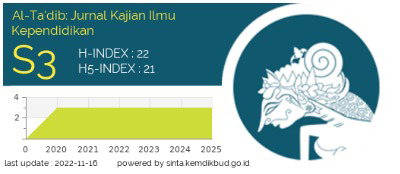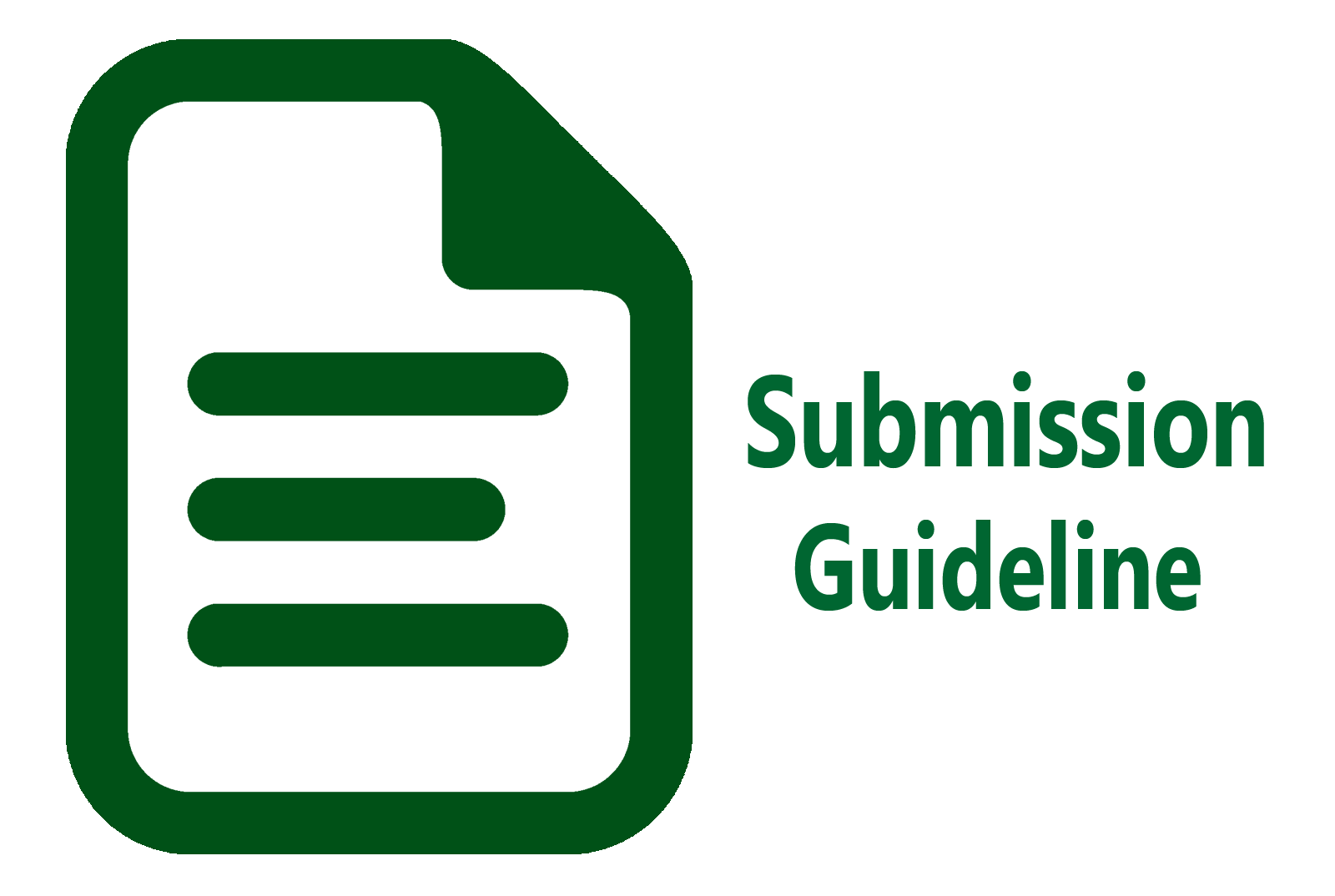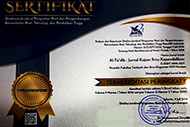Gaya dan Strategi Belajar Bahasa Arab Mahasiswa Alumni Madrasah dan Non Madrasah
Abstract
This study aims to investigate Arabic learning styles and strategies for madrasah (MA) and non-MA (non MA) alumni students. This mixed method with concurrent triangulation model (a mixture of quantitative and qualitative in a balanced way) used questionnaires combined with interviews, observations and documentation. The findings showed that MA and non MA alumni did not show significant differences in learning styles. They use audio, visual and kinesthetic learning styles together. Likewise, the tendency to become an activist, theorist, pragmatic and reflector learner is almost evenly distributed based on their learning needs. The Arabic learning strategies of MA and non MA alumni students in some circumstances show similarities, they jointly use cognitive, metacognitive, and social strategies (Oxford & Burry-Stock, 1995). To solve the learning problems they face, non-MA alumni use more social strategies by finding study friends and joining online study groups.
Keywords: Arabic language; learning strategy; learning style; madrasah alumni; nonmadrasah alumni
Full Text:
PDFReferences
Al-Qahtani, M. F. (2013). Relationship between English language, learning strategies, attitudes, motivation, and students’ academic achievement. Education in Medicine Journal, 5(3), 19-29. doi:10.5959/eimj.v5i3.124
Al-Tamimi, N. O. M. (2014). Public speaking instruction: Abridge to improve English speaking competence and reducing communication apprehension. International Journal of Linguistics and Communication, 2(4), 45-68. doi:10.15640/ijlc.v2n4a4
Alkooheji, L., & Al-Hattami, A. (2018). Learning style preferences among college students. International Education Studies, 11(10), 50-63. doi:10.5539/ies.v11n10p50
Alptekin, C. (2007). Foreign language learning strategy choice: Naturalistic versus instructed language acquisition. Journal of Theory and Practice in Education, 3(1), 4-11.
Astuti, N. T. (2017). Pengaruh gaya belajar terhadap penguasaan kosakata bahasa Inggris. DEIKSIS, 9(3), 336-349. doi:10.30998/deiksis.v9i03.1095
Bromley, P. (2013). Active learning strategies for diverse learning styles: Simulations are only one method. PS: Political Science and Politics, 46(4), 818-822. doi:10.1017/S1049096513001145
Chamot, A. (2004). Issues in language learning strategy research and teaching. Electronic Journal of Foreign Language Teaching, 1(1), 14-26.
Chamot, A. U. (2005). Language learning strategy instruction: Current issues and research. In Annual Review of Applied Linguistics, 25, 112-130. doi:10.1017/S0267190505000061
De Porter, B., & Hernacki, M. (2000). Quantum learning. Bandung: Mizan.
Ferrell, B. G. (1983). A factor analytic comparison of four learning-styles instruments. Journal of Educational Psychology, 75(1), 33-40. doi:10.1037/0022-0663.75.1.33
Fewell, N. (2010). Language learning strategies and English language proficiency: An investigation of Japanese EFL university students. Tesol Journal, 2(1), 159-174.
Gani, S. A., Fajrina, D., & Hanifa, R. (2015). Students’ learning strategies for developing speaking ability. Studies in English language and education, 2(1), 16-28. doi:10.24815/siele.v2i1.2232
Gharbavi, A., & Mousavi, S. A. (2012). Do language proficiency levels correspond to language learning strategy adoption? English Language Teaching, 5(7), 110-122. https://doi.org/10.5539/elt.v5n7p110
Gilakjani, A. P. (2012). Visual, auditory, kinaesthetic learning styles and their impacts on English language teaching. Journal of Studies in Education, 2(1), 104-113. doi:10.5296/jse.v2i1.1007
Griffiths, C., & Cansiz, G. (2015). Language learning strategies: An holistic view. Studies in Second Language Learning and Teaching, 5(3), 473-493. doi:10.14746/ssllt.2015.5.3.7
Habók, A., & Magyar, A. (2018). The effect of language learning strategies on proficiency, attitudes and school achievement. Frontiers in Psychology, 8, 1-8. doi:10.3389/fpsyg.2017.02358
Honey, P., & Mumford, A. (1986). Manual of learning styles (2nd ed.). London: Peter Honey Publications.
Honigsfeld, A., & Dunn, R. (2006). Learning-style characteristics of adult learners. Delta Kappa Gamma Bulletin, 72(2), 14-31.
Imbachijenny, C., Liliana, G. P., Darío, M. R. J., & Isaac, D. C. (2019). Virtual learning platforms: Analysis from its adaptation to learning styles. Revista Venezolana de Gerencia, 24(2), 488-501. doi:10.37960/REVISTA.V24I2.31505
Kayalar, F., & Kayalar, F. (2017). The effects of auditory learning strategy on learning skills of language learners (students’ views). IOSR Journal of Humanities and Social Science, 22(10), 4-10.
Lister, D. O. B. (2004). Effects of traditional versus tactual and kinesthetic learning-style responsive Instructional strategies on Bermudian learning support sixth-grade students' social studies achievement and attitude test scores. St. John's University (New York), School of Education and Human Services.
Loranger, A. L. (1994). The study strategies of successful and unsuccessful high school students. Journal of Reading Behavior, 26(4), 347-360. doi:10.1080/10862969409547858
Mengshoel, A. M. (2012). Mixed methods research-So far easier said than done? Manual Therapy, 17(4), 373-375. doi:10.1016/j.math.2012.02.006
Miles, M. B., Huberman, A. M., & Saldaña, J. (2018). Qualitative data analysis: A methods sourcebook. Sage Publications.
Montaño-González, J. X. (2017). Learning strategies in second language acquisition. US-China Foreign Language, 15(8), 479-492. doi:10.17265/1539-8080/2017.08.001
Muhid, A., Amalia, E. R., Hilaliyah, H., Budiana, N., & Wajdi, M. B. N. (2020). The effect of metacognitive strategies implementation on students’ reading comprehension achievement. International Journal of Instruction, 13(2), 847-862. doi:10.29333/iji.2020.13257a
Naeimi, M., & Foo, T. C. V. (2014). A comparison of vocabulary learning strategies of Iranian EFL university students: Repeating versus cooperating with peers. English Language Teaching, 7(7), 102-110. doi:10.5539/elt.v7n7p102
O’Malley, J. M., & Chamot, A. U. (1990). Learning strategies in second language acquisition. Cambridge University Press.
Onwuegbuzie, A. J., & Leech, N. L. (2010). Generalization practices in qualitative research: A mixed methods case study. Quality & Quantity, 44(5), 881-892.
Oxford, R. L. (2011). Teaching and researching language learning strategies. Routledge. doi:10.4324/9781315838816-10
Oxford, R. L., & Burry-Stock, J. A. (1995). Assessing the use of language learning strategies worldwide with the ESL/EFL version of the Strategy Inventory for Language Learning (SILL). System, 23(1), 1–23. doi:10.1016/0346-251x(94)00047-a
Oxford, R. L., & Ehrman, M. (1992). Second language research on individual differences. Annual Review of Applied Linguistics, 13, 188-205. doi:10.1017/s0267190500002464
Oxford, R. L., & Ehrman, M. E. (1995). Adults’ language learning strategies in an intensive foreign language program in the United States. System, 23(3), 359-386. doi:10.1016/0346-251X(95)00023-D
Park, C. C. (2000). Learning style preferences of Southeast Asian students. Urban Education, 35(3), 245-268. doi:10.1177/0042085900353002
Pradika, I. D., Amin, S. M., & Khabibah, S. (2019). Relational thinking in problem solving mathematics based on adversity quotient and visual learning style. International Journal of Trends in Mathematics Education Research, 2(4), 161-164.
Scarcella, R.C., & Oxford, R. L. (1995). The tapestry of language learning: The individual in the communicative classroom. TESL-EJ, 1(2), 1-3.
Susar, F., & Akkaya, N. (2009). University students for using the summarizing strategies. Procedia-Social and Behavioral Sciences, 1(1), 2496-2499. doi:10.1016/j.sbspro.2009.01.440
Tambunan, H., Silitonga, M., & Sidabutar, U. B. (2020). Blended learning dengan ragam gaya belajar. Yayasan Kita Menulis.
Tulbure, C. (2012). Investigating the relationships between teaching strategies and learning styles in higher education. Acta Didactica Napocensia, 5(1), 65-74.
Widharyanto, B., & Binawan, H. (2020). Learning style and language learning strategies of students from various ethnics in Indonesia. Cakrawala Pendidikan, 39(2), 480-492. doi:10.21831/cp.v39i2.28173
Winkel, G., Saegert, S., & Evans, G. W. (2009). An ecological perspective on theory, methods, and analysis in environmental psychology: Advances and challenges. Journal of Environmental Psychology, 29(3), 318-328. doi:10.1016/j.jenvp.2009.02.005
Wong, L. L. C., & Nunan, D. (2011). The learning styles and strategies of effective language learners. System, 39(2), 144-163. doi:10.1016/j.system.2011.05.004
Zahedi, Y., & Abdi, M. (2012). The effect of semantic mapping strategy on EFL learners’ vocabulary learning. Procedia-Social and Behavioral Sciences, 69, 2273-2280. doi:10.1016/j.sbspro.2012.12.198
Zakirman. (2017). Pengelompokkan gaya belajar mahasiswa menurut teori Honey Mumford berdasarkan intensitas kunjungan pustaka. RISTEKDIK, Jurnal Bimbingan dan Konseling, 4(1), 1-6.
Zare-ee, A. (2007). The relationship between cognitive and meta-cognitive strategy use and EFL reading achievement. Journal of Applied Psychology, 2(5), 105-119.
Zhao, N. (2009). Metacognitive strategy training and vocabulary learning of Chinese college students. English Language Teaching, 2(4), 123-129. doi:10.5539/elt.v2n4p123
DOI: http://dx.doi.org/10.31332/atdbwv15i1.3499
Refbacks
- There are currently no refbacks.
Copyright (c) 2022 St Kuraedah

This work is licensed under a Creative Commons Attribution-NonCommercial-ShareAlike 4.0 International License.
| Indexing: |










